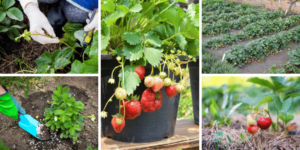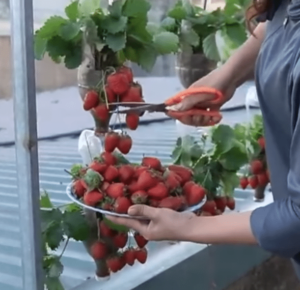How to Grow an Endless Supply of Fresh Lemons at Home
Are you tired of buying lemons from the store? Growing your own lemon tree at home is easier than you think and ensures a continuous supply of fresh, organic lemons. Whether you have a garden, balcony, or sunny windowsill, you can cultivate a thriving lemon tree with the right care.
This guide will walk you through the process of growing lemons at home, from choosing the right variety to harvesting your citrus bounty.

—
Why Grow Your Own Lemons?
1. Fresh and Organic
Enjoy freshly picked lemons, free from pesticides and artificial preservatives.
2. Cost-Effective
Save money by producing your own supply of lemons instead of purchasing them frequently.
3. Eco-Friendly
Reduce your carbon footprint by growing lemons sustainably at home.
4. Aesthetic and Fragrant
Lemon trees enhance your home with lush green leaves, fragrant blossoms, and vibrant fruit.
—
What You’ll Need
Lemon seeds or a young sapling (Meyer, Eureka, or Lisbon are excellent choices)
Well-draining soil (citrus mix or a blend of sand, peat moss, and perlite)
Pots or containers with drainage holes (for indoor or patio growing)
Citrus fertilizer (rich in nitrogen, phosphorus, and potassium)
Direct sunlight (at least 6–8 hours daily)
—
Step-by-Step Guide to Growing Lemons at Home
1. Choose the Right Lemon Variety
Meyer Lemon: A compact, sweeter variety ideal for indoor growing.
Eureka Lemon: Produces tangy lemons and thrives in warm climates.
Lisbon Lemon: Heat- and drought-tolerant, perfect for outdoor planting.
2. Decide Between Growing from Seeds or a Sapling
Seeds: A budget-friendly but longer process, taking 3–6 years to bear fruit.
Saplings: Faster-growing, typically producing fruit within 1–2 years.
3. Preparing the Planting Area
For Potted Lemon Trees:
Choose a pot with drainage holes to prevent root rot.
Use a well-draining, slightly acidic soil mix designed for citrus plants.
Place the pot on a saucer to catch excess water.
For Outdoor Lemon Trees:
Select a sunny location with good drainage.
Avoid low-lying areas prone to water accumulation.
4. Planting Your Lemon Tree
For Seeds:
1. Extract seeds from a fresh, organic lemon.
2. Rinse and soak seeds in water for 24 hours.
3. Plant seeds 1/2 inch deep in moist soil.
4. Cover the pot with plastic wrap to retain warmth and humidity.
5. Keep the soil moist until germination (typically 1–2 weeks).
For Saplings:
1. Gently loosen the roots before planting.
2. Place the sapling in soil at the same depth as its nursery pot.
3. Water thoroughly to help roots establish.
5. Providing Optimal Growing Conditions
Sunlight: Ensure your lemon tree gets 6–8 hours of direct sunlight daily. If growing indoors, place near a sunny window or use grow lights.
Temperature: Keep your tree in temperatures between 70°F and 85°F. Move potted trees indoors during frost.
Watering: Water deeply but allow the top inch of soil to dry out between waterings to prevent root rot.
6. Fertilizing for Maximum Growth
Feed your lemon tree with a citrus-specific fertilizer every 4–6 weeks during the growing season (spring and summer). Reduce feeding in fall and winter.
7. Pruning and Maintenance
Remove dead or diseased branches to maintain plant health.
Prune to shape the tree and improve air circulation.
Trim suckers (small shoots at the base) to direct energy to the main trunk.
8. Pollination Tips for Indoor Trees
If growing indoors, hand-pollinate flowers using a small paintbrush or cotton swab. Gently transfer pollen between flowers to encourage fruiting.
—
When to Expect Lemons
Saplings: Typically bear fruit within 1–2 years.
Seed-grown trees: May take 3–6 years to produce lemons.
Lemons ripen 6–9 months after flowering and are ready to harvest when they turn yellow and feel slightly soft.
—
Year-Round Care for Your Lemon Tree
1. Pest Prevention
Common pests include aphids, spider mites, and scale insects. Use natural solutions like neem oil or insecticidal soap to manage infestations.
2. Protecting from Cold Weather
Move potted trees indoors during frost or cover outdoor trees with frost blankets to prevent damage.
3. Repotting for Growth
Repot potted lemon trees every 2–3 years to prevent root binding, using fresh soil and a slightly larger container.
—
Benefits of Growing Lemons at Home
Health Boost: Fresh lemons are packed with vitamin C and antioxidants.
Culinary Uses: Perfect for lemonade, marinades, desserts, and seasoning.
Sustainable Living: Reduce reliance on store-bought produce and eliminate packaging waste.
Improved Air Quality: Lemon trees naturally purify indoor air and add a fresh citrus fragrance.
—
Creative Ways to Use Your Lemon Harvest
Homemade Lemonade: A refreshing, natural drink.
DIY Cleaning Products: Lemon juice mixed with vinegar makes an effective cleaner.
Natural Skincare: Use lemon juice in face masks or as a toner.
Preserved Lemons: Salt-cure lemons for Middle Eastern dishes.
Freezing for Later Use: Store lemon juice in ice cube trays for easy access.
—
Start Growing Your Own Lemons Today!
Growing a lemon tree at home is a rewarding experience that provides an endless supply of fresh citrus. With proper care, your tree can flourish for years, enhancing your home with beauty, fragrance, and delicious lemons.
Stop buying lemons and start growing your own—your wallet, health, and the environment will thank you!
Share this content:











